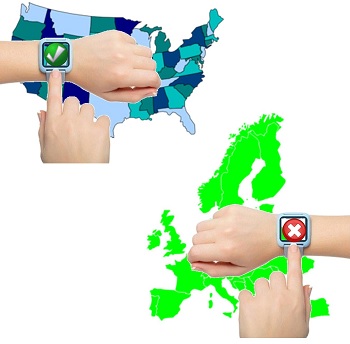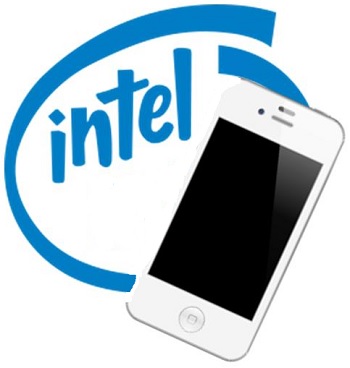A new report issued by Forrester Research has indicated that there will be a tripling of wearables users in 2015.
According to Forrester Research in a new report that they have recently released, the number of people who will be using wearable technology is going to triple throughout next year, when compared to this year’s figures.
This will, said the report, be greatly driven by the upcoming release of the Apple Watch, early next year.
The research firm has predicted that the Apple Watch, alone, will draw an additional 10 million users to the wearable technology category. This represents a more rapid growth rate than has been issued by a number of other forecasts, which feel as though the first wave of chunky, unfashionable, and just plain ugly prototypes and early generations of devices will have put many consumers off the idea for some time. But this new research indicates that next year will be a breakout for this trend.
That said, the interest in wearable technology was found to be greatly different between the U.S. and Europe.
 Polling data that was used in this Forrester Research study involved the participation of thousands of consumers throughout Europe and the United States. Among Americans 45 percent said that they could imagine themselves using wearables. That said, among Europeans, only 32 percent said that they would want to wear those devices.
Polling data that was used in this Forrester Research study involved the participation of thousands of consumers throughout Europe and the United States. Among Americans 45 percent said that they could imagine themselves using wearables. That said, among Europeans, only 32 percent said that they would want to wear those devices.
That said, within the wearables category, there are areas that consumers can picture themselves using more than others. For example, health monitors and smartwatches were among the items that consumers said that they were more likely to wear than other devices such as smart glasses. People seemed more willing to wear something on their wrists, followed by those that clip onto clothing. Lastly was those that were to be worn on the ear or face.
Even in the United States, there was a difference from one region to the next among the various categories of wearable technology. That said, in every area there were people who were willing to try everything from the aforementioned devices to smart jewelry, but even tech enhanced contact lenses and tattoos had some willing adopters.
Denny |
December 12, 2014
The chipmaker giant will be spending this massive amount over the next year to boost its hardware offerings.
Intel has already been making some important moves into the world of mobile technology, some of which have been making some rather important headlines, such as in the case of the wearables that it will be powering once they are released.
However, among its most recent mobile tech headlines has been the billions in investments it now plans to make.
The goal of the $1.6 billion in total investments will be to improve their position in mobile technology hardware development, with a particular focus on tablets and smartphones. ARM has already been taking in considerable successes within the mobile tech sphere, as the United States and the rest of the world find themselves being swamped with a nearly endless range of new products. Although Intel may not have been one of the companies that was first to move into this environment, it is hoping that by making a sizeable enough investment into the hardware in this category, it will be able to become a true competitor in this area.
Intel has also made efforts toward diversification within its new place in the mobile technology marketplace.
 It has created a range of new relationships with Chinese businesses in order to be able to manufacture its new CPUs for mobile devices. The $1.6 billion that Intel plans to invest in smartphones, tablets, and other mobile gadgets will be spread out over the next decade and a half in order to create a new China based manufacturing facility that is going to focus on the production of mobile computer chips.
It has created a range of new relationships with Chinese businesses in order to be able to manufacture its new CPUs for mobile devices. The $1.6 billion that Intel plans to invest in smartphones, tablets, and other mobile gadgets will be spread out over the next decade and a half in order to create a new China based manufacturing facility that is going to focus on the production of mobile computer chips.
Intel is also hopeful that this facility will also be usable by other third party organizations, such as Apple. Principal analyst at Mercury Research, Dean McCarron, explained that “It makes sense because Intel likes to make manufacturing facilities in technically sophisticated markets, which China is.” McCarron also explained that if a company such as Apple were ever to step up to Intel and explain that they would like a custom part for a mobile technology device, then it is more than clear that Intel would be willing and able to manufacture it with such a facility in place.
 Polling data that was used in this Forrester Research study involved the participation of thousands of consumers throughout Europe and the United States. Among Americans 45 percent said that they could imagine themselves using wearables. That said, among Europeans, only 32 percent said that they would want to wear those devices.
Polling data that was used in this Forrester Research study involved the participation of thousands of consumers throughout Europe and the United States. Among Americans 45 percent said that they could imagine themselves using wearables. That said, among Europeans, only 32 percent said that they would want to wear those devices.
 It has created a range of new relationships with Chinese businesses in order to be able to manufacture its new CPUs for mobile devices. The $1.6 billion that Intel plans to invest in smartphones,
It has created a range of new relationships with Chinese businesses in order to be able to manufacture its new CPUs for mobile devices. The $1.6 billion that Intel plans to invest in smartphones, 